Leather cutting
Contents
Cutting leather
Whether it's car leather, furniture, clothing or for shoes, leather has to be cut first, except when it is used as a complete skin.
Depending on the design, the cutting can be very complex.
Since a leather skin has a non-uniform outer contour - there are defects in the leather and not all areas of the skin are of the same quality or have the same grain pattern - the art of cutting leather lies in the optimal area yield, while taking all these aspects into consideration.
A non-uniform outer contour, defects in the leather surface and grain pattern differences must be considered.
Natural markings on leather are marked and spared during cutting.
A cutter must check the skin on both sides for defects. These can be colour defects or damages in the skin. Cutting lines must be chosen in such a way that the finished objects have a similar grain pattern. A cutter must select the better parts of the hide for the areas of upholstery that will get the most use, like seats and armrests. This must all be done whike ensuring the smallest possible amount of cutting waste. Leather is sold by surface, and cutting waste increases costs. In the furniture and vehicle sector, the waste is generally between 30 and 45%. Smaller skins with larger blanks usually incur more wastage.
Some manufacturers point to the natural characteristics of the leather and leave them visible in the blanks as long as the stability of the leather is ensured. In such cases, the waste is reduced and the consumer does not get any bad leather. The customer is only required to be sufficiently informed and does not consider such surface differences as defective.
When cutting, care must be taken that the grain structure is not too different. Here, it depends on the customer information before buying whether the difference is acceptable or not.
The blank parts are selected on the screen and distributed on the scanned skin around the marked defects.
Manual cutting
For individual products or small amounts, the blanks can be cut using a template. A stencil is placed on the leather and marked. Then the leather is cut out by hand with a pair of scissors or a knife. Important! Markers with permanent inks can cause colour migration. There are various pens for marking leather, which do not cause such problems.
The cutting lines are marked with a silver pen and cut with a special leather knife (tools available at www.ledermanufaktur.com).
Markings of the silver mines must be cleaned with moisture. Easier to handle are peel-off markers, which are simply rubbed off with the finger, available at www.colourlock.com.
Machine cut
There are various machines for cutting leather and, with the aid of lasers, it is possible to detect the external contours of the leather skins. For this purpose, leather damages are marked. Computer programs then calculate the optimal cutting. The skin is then aligned on the cutting table. The outer contour of the previously scanned skin is marked on the table by light, so that the skin is correctly positioned. Then the skin is sucked onto the table by vacuum and the cutting is automatically performed by a knife or water jet. Small knives, costing less than €10, can cut up to 15 kilometres.
Soft or wavy leathers are cut by placing a plastic film around outer edges of the skin. The vacuum ensures the edges stay flat on the table allowing them to be cut either by a machine or a knife.
A foil prevents the leather edges from rising. - Cutting with a knife.
Even with knives you can cut very fine contours with the automatic cutting of leather.
After cutting, the blanks are optically marked with a laser so that the parts can be pre-sorted more easily for the next step. To simplify the work, the same parts are illuminated with the same colour.
Laser lighting as working aid. - Leather cutting waste.
Cutting with a water jet is done with a 0.1 nozzle and strong pressure. Finer contours can be cut than with the knife. The leather is not made significantly wet by this method.
The automatic cutting with the knife is only a problem with the smallest detailed contours.
Automatic cutting with water jet can cut detailed contours more precisely.
The saddlery in Zuffenhausen at Porsche employ approx. 250 employees. The car seats are cut exclusively with water jet cutting systems. For a Porsche 911 approx. 5 hides are processed.
With cheaper cut-to-size tables, it is possible to illuminate the positions on the cutting table and the leather is then positioned under the light, held in position by vacuum and then automatically cut.
Illuminated cut and finished cut, seen at www.ledermanufaktur.com).
Punching leather
Leather is also punched. The punch knives are laid on the leather and then pressed into the leather with a punching press.
Punching tool for punching four leather symbols. - Different punching tools.
The swing arm punch machine for leather is often used. The punching is triggered on two handles so that the hands cannot be injured under the press.
In order to punch as many parts as possible in one working step, several tools or tools with several fields can be laid on and leather can be superimposed several times. The highest yield is obtained with as many punching tools as possible and with a maximum of leather layers.
Cutting leather with a laser
Leather can also be cut with a laser. As with waterjet cutting, fine contours are no problem. However, since the laser is a combustion process, the leather smells accordingly and the soot of the cut edges can cause stains. It is therefore always necessary to check whether punching or cutting with a knife or waterjet is the better alternative.
With a laser-cut leather.
Additional information
- Natural markings on leather
- Leather defects
- Leather cutting waste
- Measures and weights
- Laser engraving - Laser cutting leather
- Hole punching







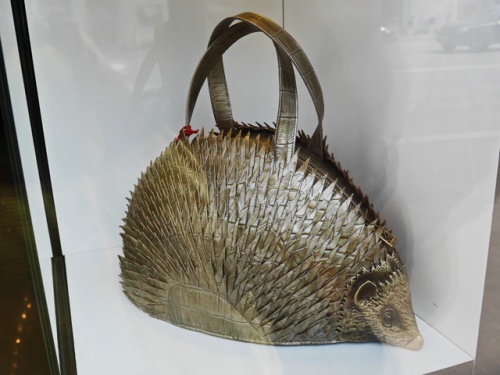
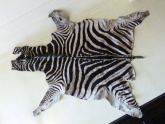
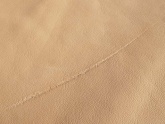
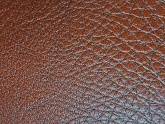
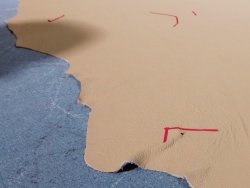
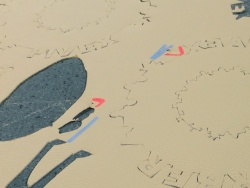

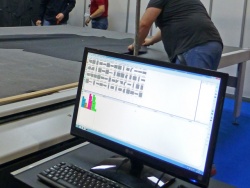
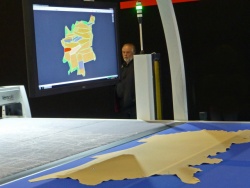
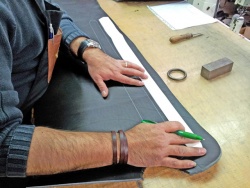
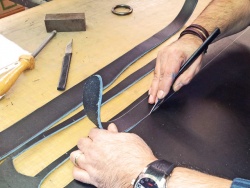
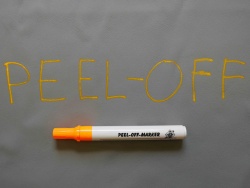
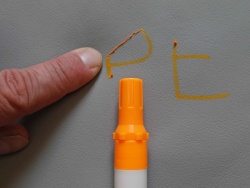
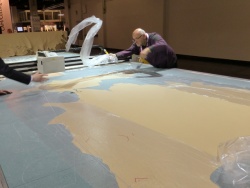
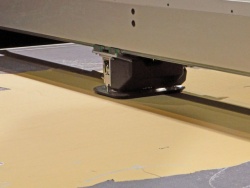
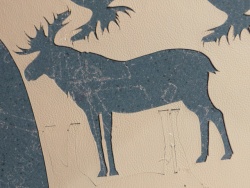
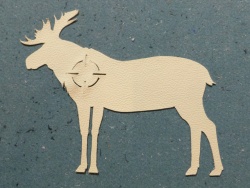
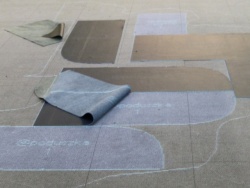
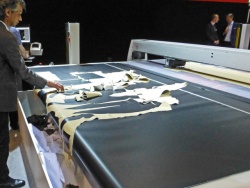
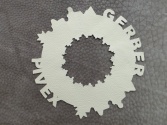
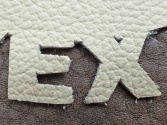
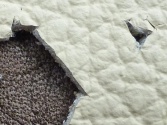
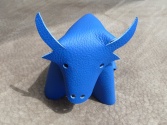
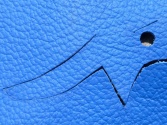
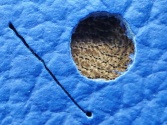
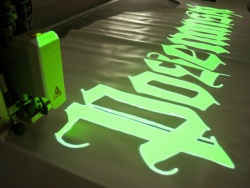
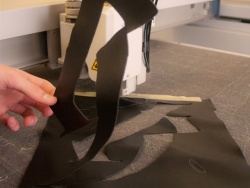
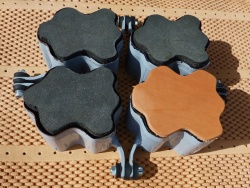
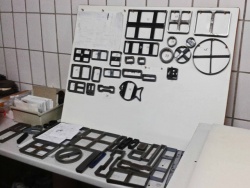
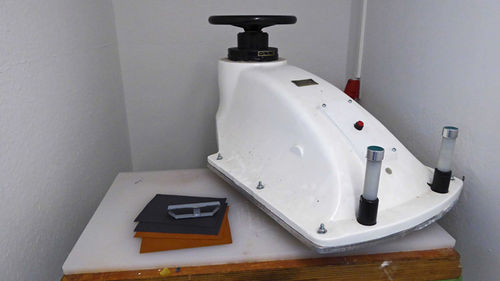
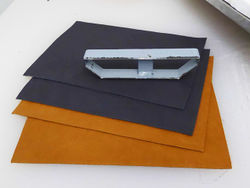
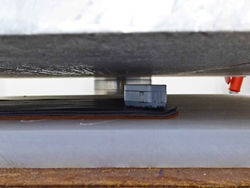
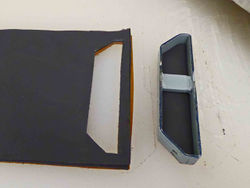
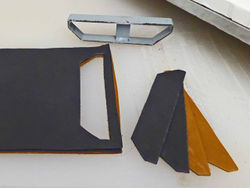
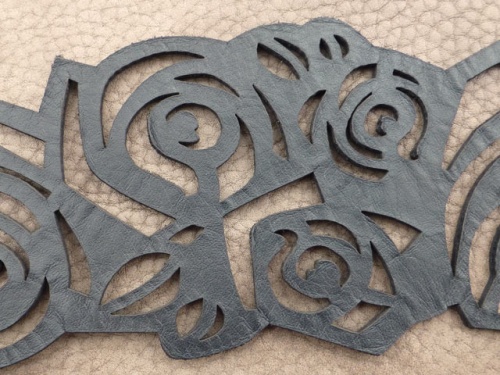


 a kotori web solution
a kotori web solution